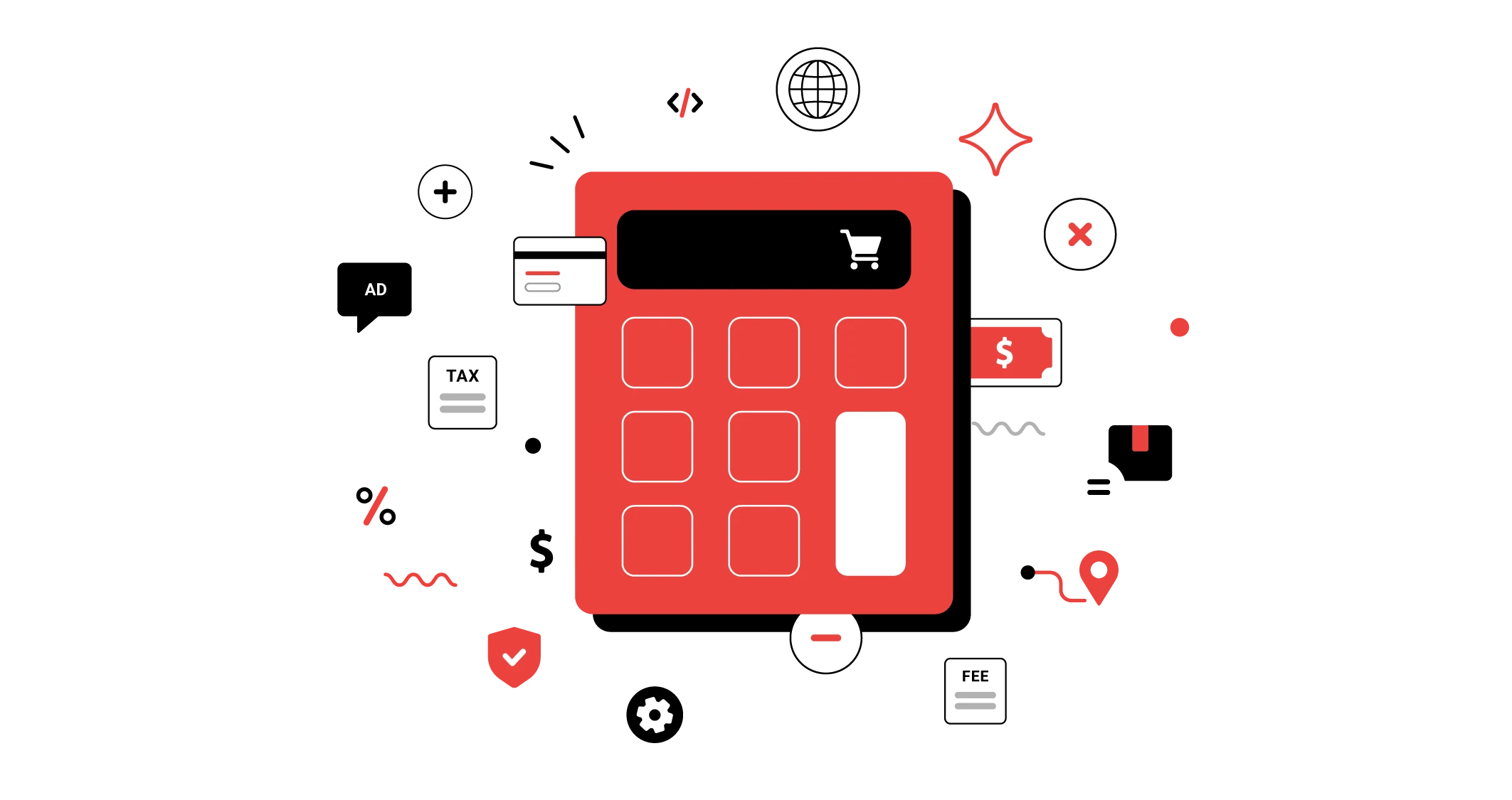Shopify Cost Factors
According to Shopify itself, an online store on their platform should cost $39 per month, apart from a domain registration. Rates for SME businesses start at USD $2,300 per month. You need to call them and ask to determine your rate.
Shopify greatly simplifies the cost structure of running an e-commerce store. They offer built-in features that include many of the regular e-commerce expenses covered under a monthly subscription rate. But there are two areas where Shopify costs vary according to your choices regarding how you use the platform:
- Themes and templates you want to purchase.
- Shopify add-ons costs
As an enterprise business, you are also probably going to have to pay:
- Variable revenue-based fees.
- Shopify development costs.
- Shopify payment processing fees (charged per order).
BigCommerce Cost Factors
Like Shopify, BigCommerce offers highly customized services for enterprise businesses. However, BigCommerce is in some ways more complex than Shopify, offering larger businesses more freedom. That complexity means the ceiling is higher, but potential costs are also higher.
BigCommerce does not list a minimum monthly rate for enterprise customers. They also don’t host the kind of applications ecosystem that Shopify does. Instead, costs are primarily associated with the time and resources you invest into building on their platform. In some cases, you will save; in others, you will spend more.
Overall (at the enterprise level), BigCommerce sacrifices simplicity in exchange for more customization and far smoother scalability.
Adobe Commerce Cost Factors
Adobe Commerce is the only option of these three that offers no standard pricing packages. Instead, they only offer two packages:
- Adobe Commerce Pro (on-premise SaaS)
- Managed Services (Cloud-based service for more stable support)
The pricing for both packages is based on your individual needs, for which you’ll need to:
- Fill out a questionnaire to receive a quote.
- Get in contact with a representative to confirm your rate.
Based on these steps, you will get a final rate based on your annual Gross Merchandise Value and Average Order Value.
Some customers report monthly rates lower than those for either Shopify or BigCommerce enterprise packages. However, the variance is just as wide, and some businesses pay six figures for licensing and ongoing development/maintenance costs.
Scalability & Customization: What Matters Most for Your Business?
All three of these e-commerce giants offer scalability and customization. However, they offer you different levels of control and paths to customizing and scaling:
Shopify Scalability & Customization
Shopify is fully hosted, offering all its customization and scalability features on-platform and through extensions.
In terms of scalability, Shopify’s approach offers predictability and consistency. Even during traffic spikes, you can normally rely on them for stable performance. Their uptime is almost perfect and the store you build should function normally regardless of the complexity you introduce through extensions and custom themes.
If you ever need to customize user experiences or site functionality, Shopify makes it easy and fast. There are thousands of extensions to choose from, normally including several options for the same function.
As your business grows, you simply pay according to their sliding scale. Paying an extra commission per order is one of the most complained-about limitations to scaling on Shopify. While it is easy to handle greater needs, it’s not always the best option in a cost-benefit analysis.
Overall, the platform’s processes make scaling and customising easy on Shopify.
BigCommerce Scalability & Customization
BigCommerce is also a fully hosted solution. Hosting and domain are both included in all its plans, so getting started is easy.
When it comes to scalability, you can expect consistent and stable service regardless of your traffic and order volume. BigCommerce was named after its commitment to handle substantial volumes.
Unlike Shopify, BigCommerce does not charge transaction fees. Of course, you still must pay the payment processors you rely on for your sales. However, the lack of an additional percentage-based fee makes BigCommerce much more financially friendly for scaling.
For customization, developers can take advantage of many options. The easiest path is using BigCommerce for WordPress (BC4WP) to take advantage of any WordPress resources. The BC4WP path enables you to take advantage of any WordPress Themes or plugins. You gain a high-volume enterprise e-commerce platform and all the CMS benefits of WordPress. While this can sometimes take more time, it opens the door to the most popular and diverse CMS.
Adobe Commerce Scalability & Customization
Adobe Commerce (Magento) is almost as old as Shopify but takes an open-ended approach to customization and scalability.
Unlike the two alternatives we’re comparing here, Adobe Commerce is a mostly open-source option, while Magento Open Source offers complete source code access and full backend customization. With self-hosting and partial (or total) backend customization, your options are greatly expanded.
Adobe Commerce easily wins when it comes to your possible level of customization. You just need to have teams capable of taking full advantage of that fact.
In terms of scalability, Adobe Commerce offers you a double-edged sword:
- Your capacity for handling is potentially far higher than with alternatives.
- Your organization must have more technical expertise and resources to work with to take full advantage.
.webp)
.webp)




